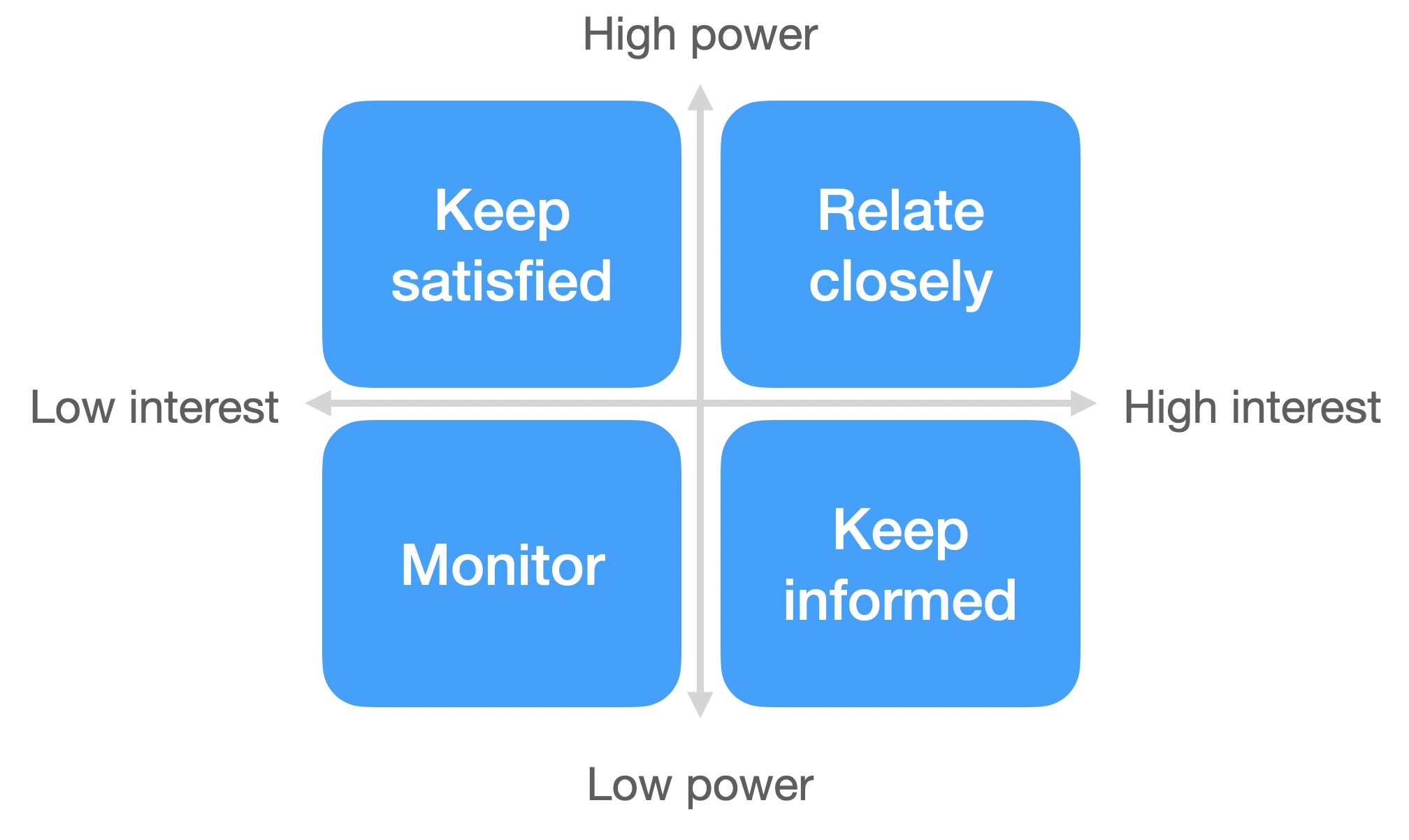Stakeholder analysis
Understanding stakeholders as part of a Social License to Operate.
A stakeholder is an individual, group, organisation or a political entity with a specific stake in the outcome of a policy, project or operation. In order to build or maintain social licence to operate, it is critical to known and understand your stakeholders. Stakeholder analysis is a useful set of tools that can help.
Steps
There are several steps to stakeholder analysis.
Identify stakeholders
First you need to identify who your stakeholders are. The interest influence map is a useful way to identify potential stakeholders. Remember that there may be both internal and external stakeholders. Identification of stakeholders should be inclusive and collaborative, involving not only the project/operation team ‘brainstorming’, but all internal stakeholders to ensure that minor (and potentially influential) stakeholders are not overlooked.
Prioritise
Once stakeholders are identified, the second step is to determine which stakeholders are relatively more important and how they can influence your policy, project, operation or proposition. The interest-influence map is a useful way to identify map your potential stakeholders.
The ongoing nature of a Social Licence to Operate means that all of your potential stakeholder are relevant (see Figure 1). Low interest and low power stakeholders may simply need to be monitored for any changes in their level of interest or power so that they can be engaged appropriately so they do not frustrate, stop or change a project or operation at a later stage (Monitor). High power and low interest stakeholders should be engaged and related to in ways that keep them happy so that they do not derail a project or operation (Keep satisfied). Low power but high interest stakeholders may often be satisfied with being kept informed of the project or plan as it progresses (Keep informed). High power and high interest stakeholders require close, strong relationships to be built or maintained (Relate closely).

Figure 1. Categorising stakeholders for building or maintaining Social Licence to Operate.
Assess support and resistance
The third step in the stakeholder analysis for building or maintaining Social Licence to Operate is to determine the level of support or resistance to the project or plan for each stakeholder. The level of support can be categorised using a five-stage continuum from unaware-through to leading.
| Level of Support | Description | Social Licence to Operate |
|---|---|---|
| Unaware | Stakeholder unaware of the project/operation/plan and its consequences | |
| Resistant | Aware of the project/operation/plan, but opposed | Withheld/withdrawn SLO |
| Neutral | Neither supportive nor opposed | Acceptance of project, no SLO |
| Supportive | In favour of the project/operation/plan and would like it to succeed | Approval of project, SLO present |
| Leading | Active engagement in project/operation/plan success | Psychological identification with project, SLO present |
Table 1. Continuum of support for an organisation, operation, project or proposition.
Level of impact
The fourth step in the stakeholder analysis for building or maintaining Social Licence to Operate is to describe the level of impact on the project of each stakeholder. If any of your stakeholders moved from resistant to supportive, or supportive to resistant, what impact would this have on the project.
The stakeholder analysis matrix below (Table 2) provides a place where information and details of each stakeholder can be consolidated and from this information an individualised engagement strategy can be drafted for each stakeholder.
| Stakeholder | Contact(s) | Role/Connection | Benefits of involvement | Level of Interest (L/M/H) | Level of influence (L/M/H) | Level of impact | Current/desired support |
|---|---|---|---|---|---|---|---|
Table 2. Stakeholder Analysis Matrix (Adapted from IAP2 Engagement design manual)
More information
IAP2 Australasia 2018. Engagement Design Version 5.01. International Association of Public Participation Australasia. 80p.
Queensland Government. (n.d.) Project Management Reference Guide. Department of Transport and Main Roads, Project & Program Management Unit. Brisbane. 98p.
Reed, M., Graves, A., Dandy, N., Posthumus, H., Hubacek, K., Morris, J., Prell, C., Quinn, C. & Stringer, L. 2009. Who’s in and why? A typology of stakeholder analysis methods for natural resource management. Journal of Environmental Management, 90(5): 1933-1949.
Roseke, B. 2019. How to Perform a Stakeholder Analysis. Project Engineer
Schmeer, K. 1999. Guidelines for conducting a stakeholder analysis. Partnerships for Health Reform & Abt Associates: Bethesda, MD.